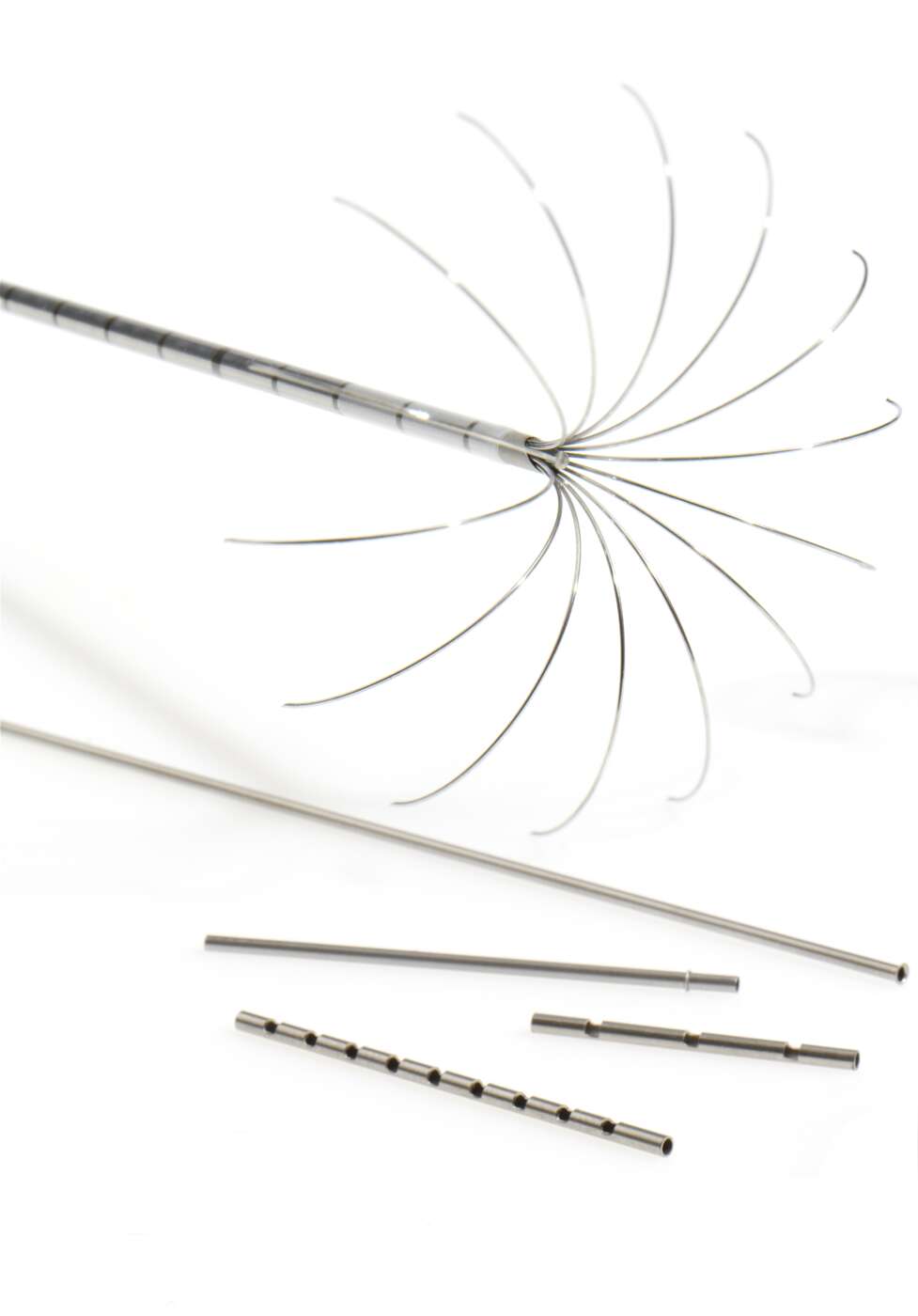Hypotubes (shorthand for “hypodermic needle tubing”) are extremely thin metal tubes which function as a shaft or reinforcement structure in modern medical applications. From extremely advanced neurovascular catheters to more common coronary procedures and drug delivery systems, high-precision hypotubes are critical components throughout today’s medical space.
The Importance of Precision in Hypotube Manufacturing
Hypotube components for medical devices are designed to be as non-invansive as possible while providing the pushability, torque transmission, and kink resistance needed to reliably carry out many crucial patient procedures.
We have to maintain extreme dimensional accuracy and meet exceptionally tight tolerances to ensure the compatibility of the hypotubing with any interconnected components. Since hypodermic tubing is used for catheters and intravenous lines, it goes without saying that precise surface finishes and smooth, burr-free edges are also critical. That’s to ensure patient comfort as well as equipment sterility.
Laser Cutting Services and Electro-Chemical Grinding Solutions
China Spring & Machine’s manufacturing solutions offer unique advantages to the modern medical industry. For hypotube components and similar miniature tubular parts, we offer high-precision laser tube cutting services to meet the industry’s most exacting standards. China Micro Spring’s laser cutting systems can cut intricate, complex shapes (e.g., slots, holes, or curves) that would be difficult or prohibitively expensive to produce with mechanical machining methods.
Electro-chemical grinding (ECG) is another high-precision manufacturing process for hypodermic needle tubing. Utilizing ECG, China Micro Spring can reliably produce complex part features while working with hard, conductive materials like stainless steel and nickel-titanium (nitinol). The process offers exceptional repeatability in creating slots and notches with exceptionally tight tolerances. Like laser cutting, ECG produces burr-free edges with minimal thermal damage and fine surface finishes, reducing the need for secondary processing.
Medical Hypotube Use Cases and Product Applications
- Medical Guide Wires – Used to navigate blood vessels and other pathways in the body during minimally invasive procedures – from stents and drug delivery systems to catheter placements.
- Neurovascular Catheters – Used in stroke intervention (e.g., thrombectomy). Hypotubes help navigate cerebral vasculature.
- Coronary Angioplasty Catheters (PTCA) – Hypotubes deliver balloon catheters to blocked coronary arteries.
- Ablation Catheters – For cardiac arrhythmias—hypotubes house energy delivery systems (e.g., RF or cryoablation).
- Delivery Catheters for Stents or Valves – Provide structural support and precision during deployment.
- Connectors and Catheter Shafts – Hypotubes are used in connectors and shaft assemblies in various catheter-based systems, particularly when reliable mechanical performance is critical.
Achieving Extremely Precise Physical and Mechanical Properties:
Kink Performance
One of the most important features of hypotubes that we have to consider is kink performance. In other words, the device’s ability to resist kinking and maintain its cross-sectional profile during compressive deformation. A strong tubing must have good kink resistance to navigate through the body. This can be achieved by enhancing the material’s ductility to increase its strength and resistance.
Pushability and Torque Handling
Another key characteristic of medical hypotubes is their push and torque quality. This refers to the ease with which a physician transmits the device from the proximal end to the distal end. To achieve optimal pushability, the device material should have great tensile strength. For example, we commonly use 304 and 316 stainless steels in manufacturing hypotubes for the material’s good tensile potential (amongst many other qualities).
Of course, proper heat treatment is crucial to likewise ensure proper strength and durability. China Micro Spring uses premium medical-grade stainless steels which are carefully heat treated and optimized for hypotube applications.
Trackability
The trackability of the hypotube is a crucial property we consider. Trackability measures what the physician will feel when manipulating the device. Low tracking allows for easier manipulation and positioning. The physician should be able to move the device through the body with less friction – one reason why we must maintain high-precision tolerances for every component.
Transition Performance
Transition is the change in stiffness from the proximal shaft to the distal shaft. This is achieved by removing some material from the distal end to make the device more flexible as it moves through the body. Laser cutting in particular helps us achieve high-precision geometries optimized for transition performance.
High-Precision Manufacturing Solutions for Hypodermic Needle Tubing
China Spring & Machine is backed by more than 40 years of service as one of China’s leading medical device manufacturing companies. We ensure superior quality and precision with every laser machined component in accordance with the strict requirements of the modern medical sector. Trust us for your miniature tubular components needs.
